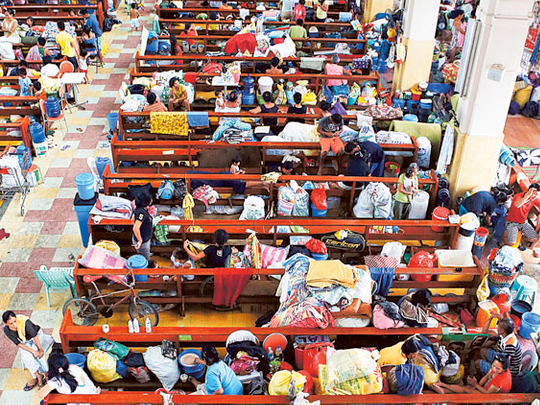
Manila: Almost two weeks after Typhoon Haiyan struck Visayas, government health experts are now on the lookout for cases of life-threatening waterborne diseases.
Dr Paula Sydiongco, the Department of Health’s assistant regional director for the Visayas, said authorities are now monitoring cases of diseases such as leptospirosis and tetanus in Tacloban City, Southern Leyte, Samar and Panay Island.
Sydiongco said at least two patients were confirmed to have died from tetanus while the health department is still trying to verify cases of leptospirosis.
According to the World Health Organisation (WHO) leptospirosis is a disease is a bacterial disease that affects both humans and animals.
“Humans become infected through direct contact with the urine of infected animals or with a urine-contaminated environment. The bacteria enter the body through cuts or abrasions on the skin, or through the mucous membranes of the mouth, nose and eyes. Person-to-person transmission is rare,” it said.
Symptoms of the disease include high fever, severe headache, muscle pain, chills, redness of the eyes, abdominal pain, jaundice, haemorrhages in the skin and mucous membranes, vomiting, diarrhoea, and rash.
On the other hand, tetanus can afflict people who have wounds and came into contact with the bacteria. Also known as “lockjaw” it affects the nervous system and can cause death if left untreated.
Aside from leptospirosis and tetanus, health officials are also on the lookout for cases of diarrhoea, especially in far-flung area where villagers get their water from exposed sources such as deep wells.
Earlier, Health Secretary Enrique Ona addressed fears of people living in typhoon-devastated areas over the presence of dead bodies in the open.
Ona explained that dead bodies do not cause epidemics. “Most infectious germs do not survive beyond 48 hours. Body handlers can wear gloves and must wash their hands as a precautionary measure,” he said.
The government has stopped recording the death toll from Haiyan at 4,011 with 1,602 missing and 18,557 injured.
The health department has since shifted its focus to public health as post-Yolanda efforts enter a recovery period as thousands of displaced residents continue to find safe shelter outside of Leyte and Samar.
The health department is also focusing more on public health as threats of epidemics loom in vulnerable communities that do not have access to safe water and which suffer from poor or inadequate sanitation.
“Although there are still no outbreaks recorded, we instructed the newly-deployed replacement teams to step up measles, tetanus, oral polio and rabies vaccinations in all evacuation centres,” Ona declared.











